People Hate This Toxic Weed, But I Secretly Love It – Discover The Unexpected Benefits Of The Beautiful Pokeweed Plant
Sure it's poisonous and invasive, but to me, pokeweed is the perfect plant for a wildlife garden. Here's why I love this noxious weed no matter what people say.
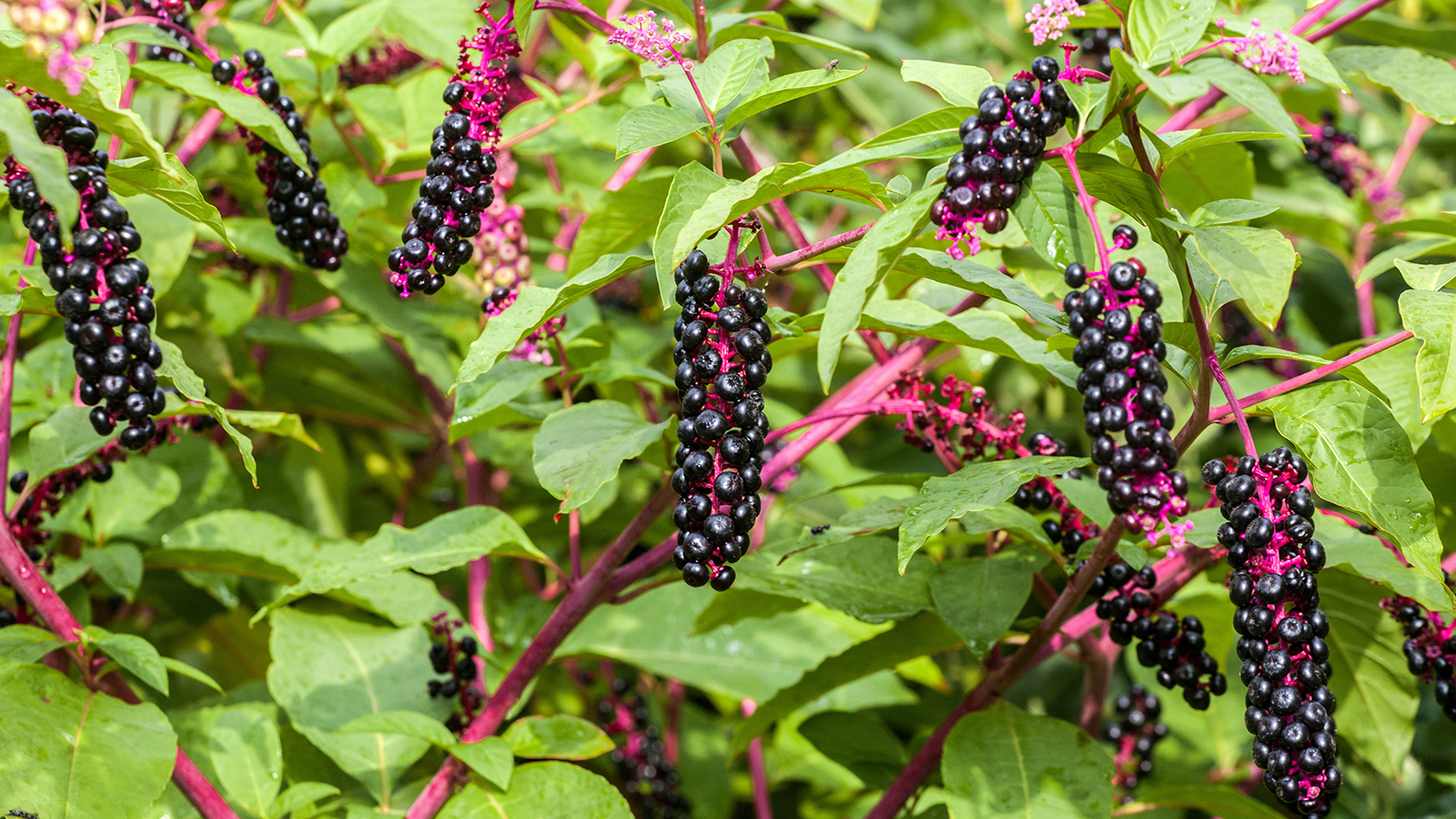

A weed is defined as a plant that you don’t want, but what about so-called weeds most people hate but you love? The plant known as pokeweed (Phytolacca americana) is widely considered a weed because it has two serious “weedish” characteristics: it’s invasive and toxic. Yet some gardeners really adore pokeweed and I’m one of them.
When pokeweed turned up in my backyard without invitation, I fell in love before I ever found out it was a weed. It grew fast from a knee-high shrub to a small tree, taller than me, with upright racemes of tiny pale flowers that turned into dark purple berries.
The benefits of growing pokeweed are impressive. The plant lit up the landscape, grew without any assistance, and drew more birds to the backyard than any other plant in my garden. That settled the debate about the pros and cons of growing weeds in the garden for me. In my book, pokeweed is a desirable plant and most definitely not a weed.
Meet the Pokeweed Plant
You may need more than one introduction to get fully acquainted with this shrub, given the many unique names it possesses. There is pokeweed, of course, or American pokeweed, but it’s also called pokeberry, poke sallet, dragonberry, pigeonberry weed, and inkberry.
All of these names refer to Phytolacca americana, a large perennial shrub that can grow up to 10 feet (3.3 m) tall. Its leaves are green, growing on reddish stems, and it produces pale flowers in a candle-like raceme.
The flowers develop into berries that are dark purple, almost black. Over the years, people have used the berries as dye and ink, which explains the common name “inkberry.” Don’t confuse pokeweed with the other shrub named inkberry holly. The berries on pokeweed contain seeds by which the plant easily propagates itself, often with the aid of birds.
If you're interested in growing pokeweed yourself, you won't be able to find seeds in any big box stores or nurseries. But you can get pokeweed seeds from Amazon or other online sellers who specialize in selling hard-to-find plant seeds.
Sign up for the Gardening Know How newsletter today and receive a free copy of our e-book "How to Grow Delicious Tomatoes".
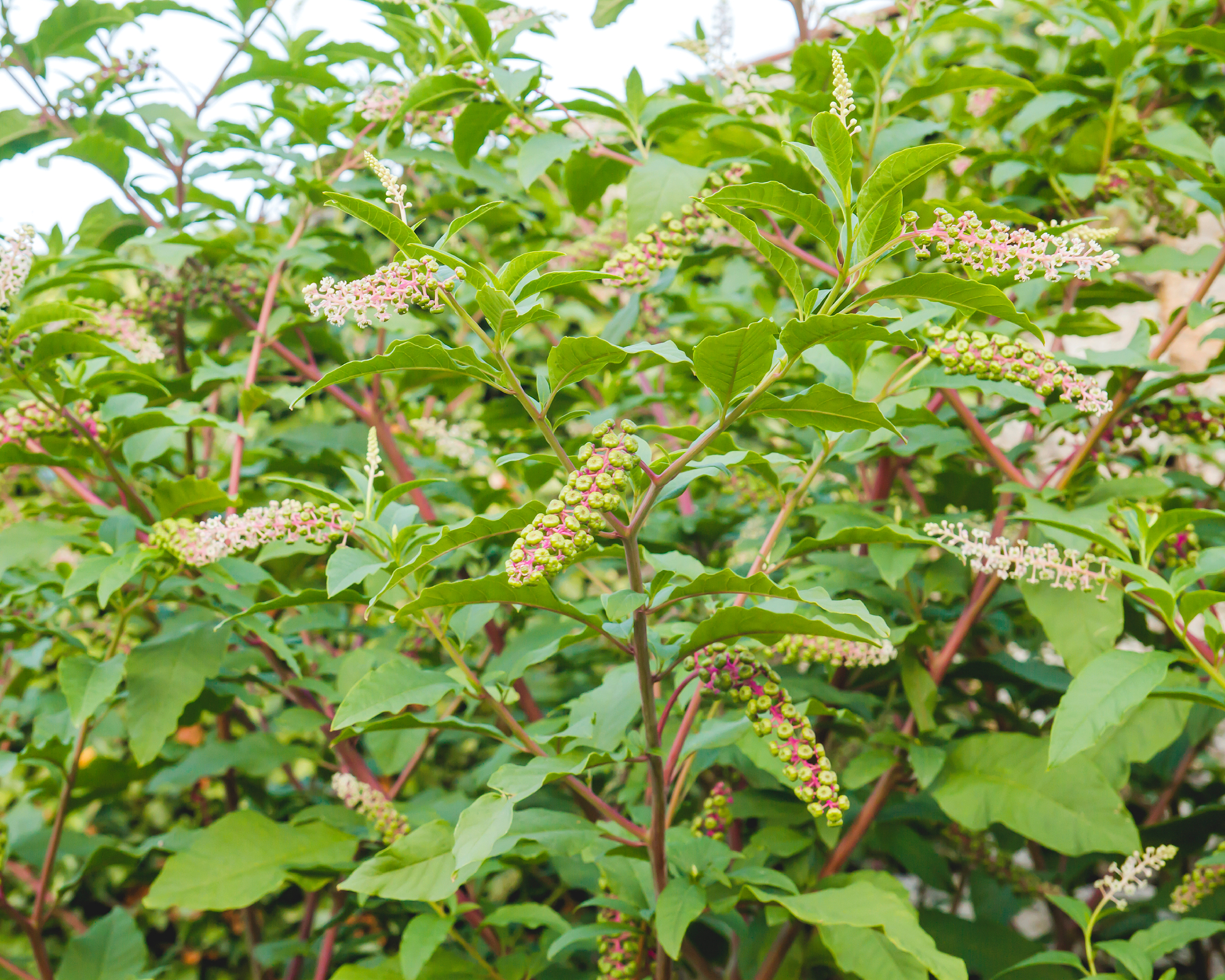
Why Do People Hate Pokeweed?
Pokeweed has grown wild in the United States for centuries, since long before the colonists arrived. Indigenous people found many uses for it, both medicinal and culinary, as well as for dye made from the purple berries. But today, many people consider it a pest weed.
Two words explain why many gardeners (and virtually all farmers) hurry to get this plant out of their backyard: toxic and invasive. When I say toxic here, I mean deadly.
The berries and mature foliage are poisonous to humans, dogs, and livestock. The roots have the deadliest toxins, followed by the foliage, then the berries. Ingesting these parts of the pokeweed plant causes respiratory paralysis which can lead to death. Pokeweed plants can also cause skin irritation, so you should always wear gloves when touching this poisonous plant. We recommend a set of thorn proof & puncture resistant gloves, like these ones from Amazon.
In addition, each of the pokeweed’s berries contain seeds that can grow another pokeweed plant. The berries may fall to the ground from the shrub and decay, thereby “planting” the seed. Alternatively, birds may eat them and spread to another location.
If you ever grow a pokeweed, you are likely to have pokeweed for years after, even if you try to eradicate them. Seeds remain viable for decades, which can make controlling pokeberry plants extremely difficult. For these reasons, pokeweed is often considered an invasive native plant.
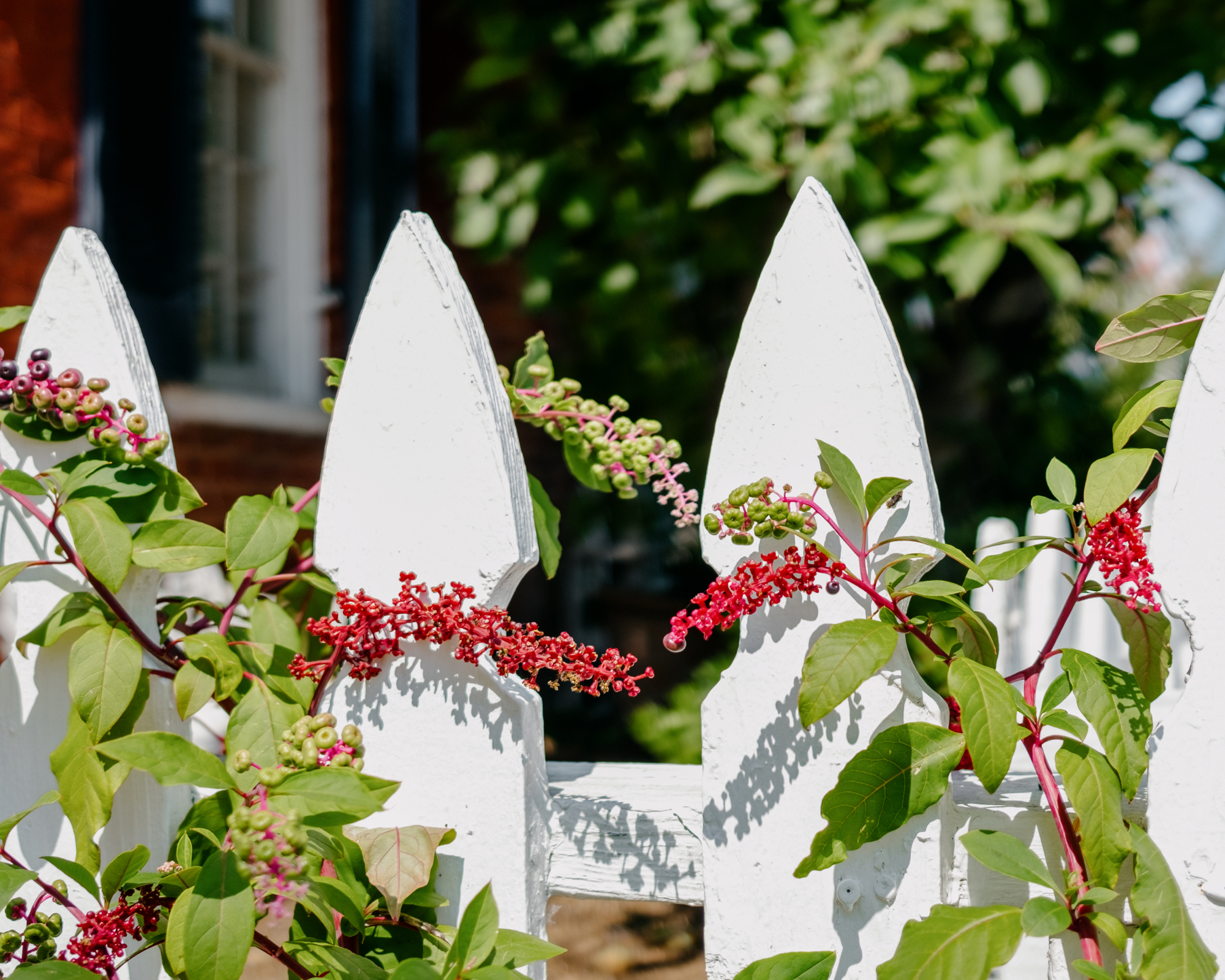
And Yet…Pokeweed Has Its Fans, Like Me!
I know this plant seems to have a lot of bad qualities, but is pokeweed good for anything? Yes! In fact, pokeweed’s benefits have won over many fans—including me.
I have always worked to attract beneficial animals to the garden and turn my yard into a wildlife habitat. I’ve put in seed feeders for birds, nuts for squirrels, hummingbird feeders, water feeders for raccoons, and watering stations for pollinators in my garden in San Francisco as well as feeders for badgers, foxes, wild hares, and hedgehogs in my garden in France.
I’ve installed ponds as a habitat for newts, frogs, salamanders, dragonflies, and snakes where they can have their young. I’ve planted blueberries, cherry trees, and butterfly plants to lure wildlife and regularly leave stacks of branches and detritus in which animals can pass the winter, safe from prey. But none of these wildlife gardening efforts can compare with simply growing a pokeberry plant.
Pokeberry has been called a natural wildlife feeder. It provides food for many different species of birds like robins and bluebirds, as well as squirrels, mice, foxes, leopard moths, raccoons, opossums, deer, and even black bears. Birds and other wild creatures are apparently not vulnerable to pokeweed’s toxins and love to eat it.
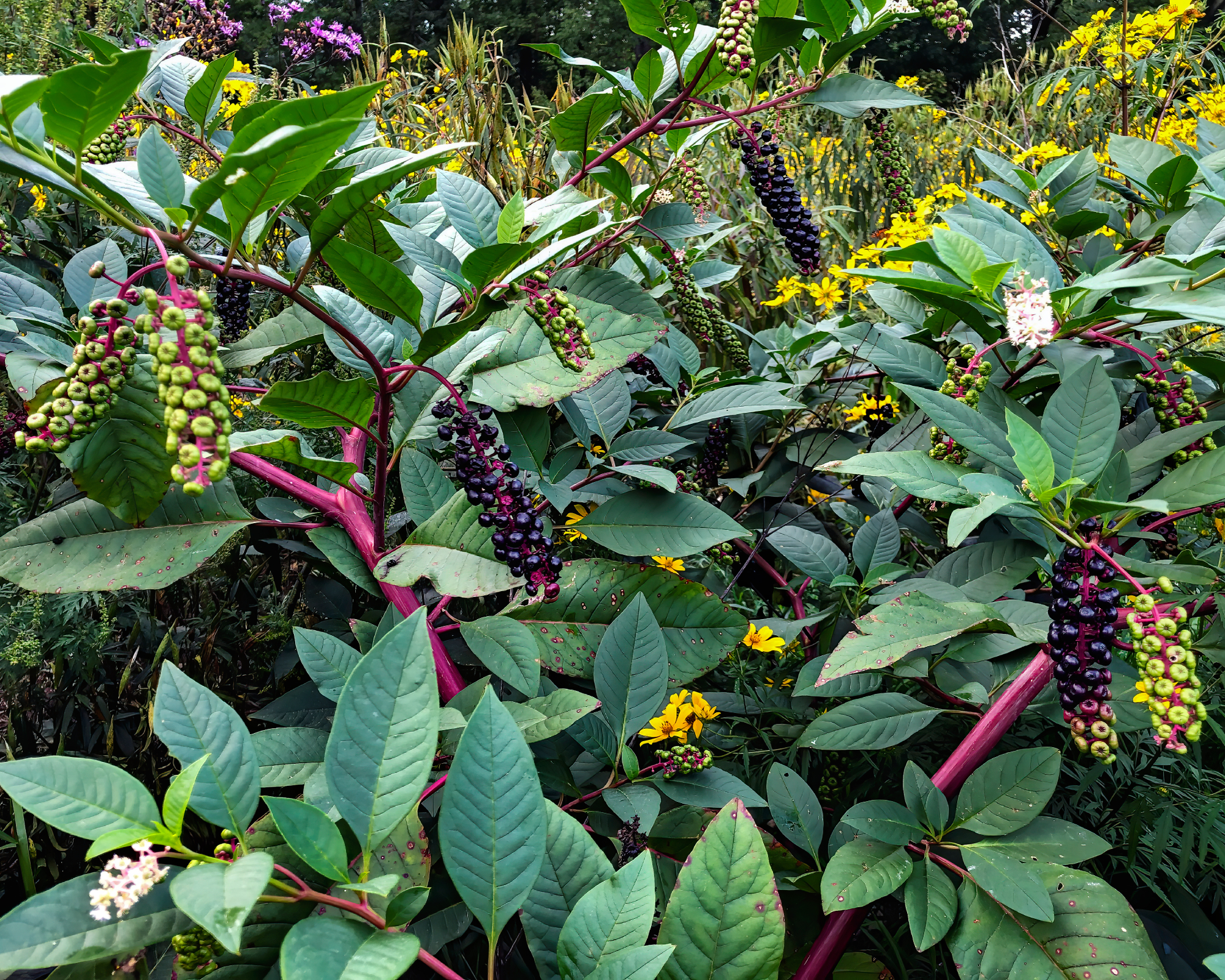
Discovering Pokeweed
Pokeweed appeared out of nowhere in my San Francisco garden, which is to put it politely, a bit on the wild side. And it grew fast! I watched it grow from a flowering shrub into an 8-foot (3 m) tree before I took a cutting to the San Francisco botanical garden to find out what it was. The head gardener looked it up for me and advised me to rip it out, but by then it was too late.
The plant, now identified as a toxic weed, was overflowing with birds. The “regulars” abandoned the bird feeder to feast on the berries and other birds—birds I had never seen in the yard before—joined them. It was like a huge avian rave festival with birds planing in to find an unoccupied branch. There were many different types of songbirds that filled the backyard with their sweet cries.
Let’s just put it out there: you should consider encouraging a pokeweed plant if birds and wildlife are your thing. One shrub was enough to transform my garden, but if you need more, pokeweed is ready and willing to propagate. I have now introduced it to my land in France, and it has worked the same magic there.
How Do You Use Pokeweed in the Garden?
I love everything about pokeweed, from the ridiculously long racemes of purple berries to the shrub’s resilient ways. Thankfully, I no longer have a young child at the house, nor livestock that might eat the foliage and get sick. If you’re in a similar situation, pokeweed might be the plant to try. It will bring songbirds for certain, including the gray catbird, northern mockingbird, northern cardinal, and brown thrasher.
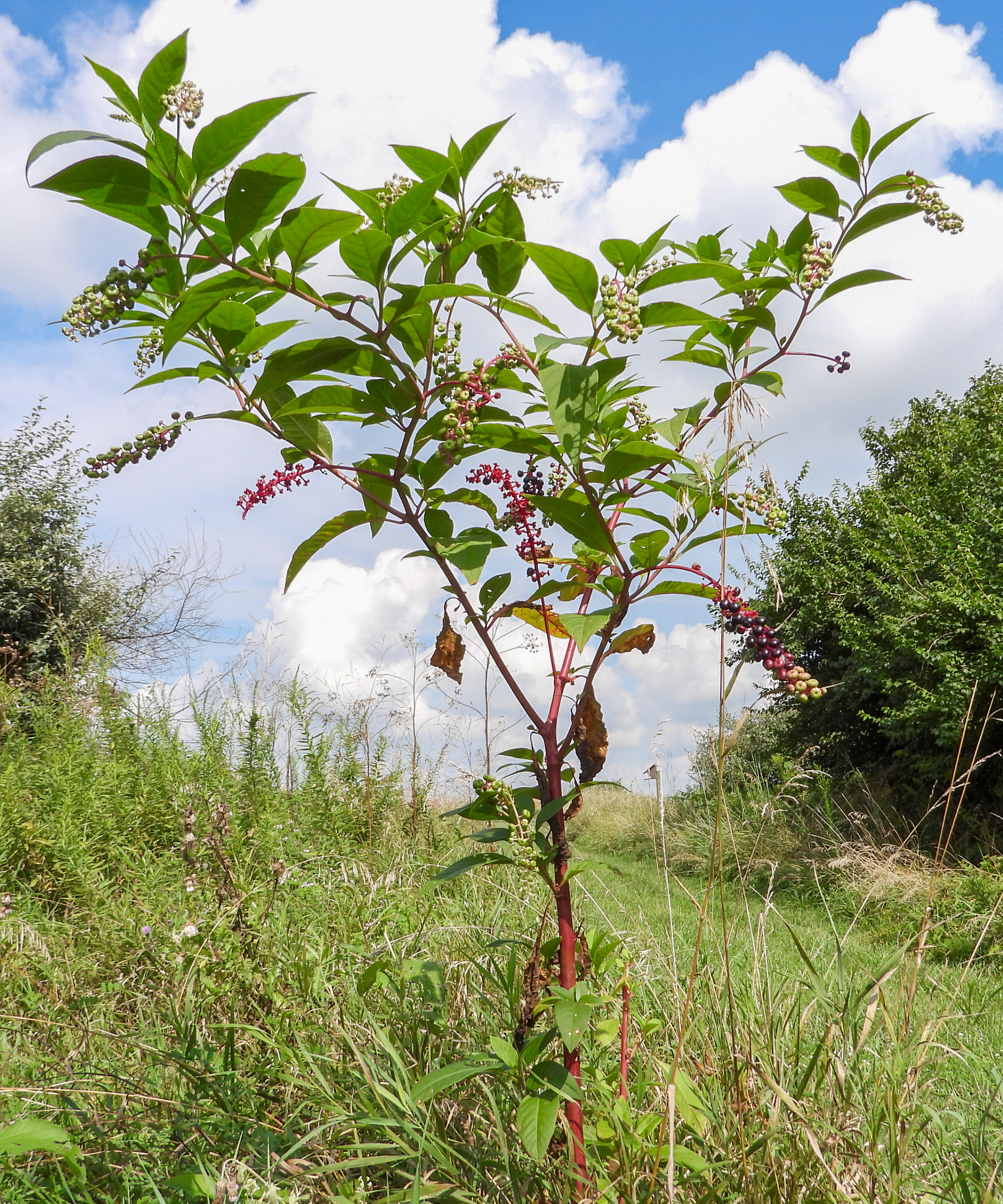
What else is pokeweed good for? In addition to its cool, Dr. Seuss aesthetics and wildlife appeal, some people grow pokeweed to eat.
Yes, this at first sounded curious to me, too, since it is poisonous to humans. But in reading more about it, I discovered that immature shoots and leaves are edible when young—that is, in spring and early summer. The same plant parts are deadly as they mature, and roots and berries—mature or not—are always toxic.
The cooked greens look something like turnip greens and are called poke sallet, poke salad, or polk salad. Who remembers the 1968 Tony Joe White garden-themed song (later covered by Elvis) called “Polk Salad Annie”?
Tips for Growing Pokeweed
I encourage animal and insect lovers to try growing these weeds for wildlife. Here are some tips on how to grow pokeweed while keeping yourself and others safe:
- Wait until your children have passed the age that they will reach for bright berries without asking questions first.
- Plant pokeweed well away from the fence line if you live in an urban area. You don’t want the neighbor’s kids to eat berries either.
- If you have a playful or hungry dog, fence off the area in which you are planting pokeweed.
- Don’t goof around with the berries, e.g. make dye with them, using your bare hands. The pokeweed berry juice can be absorbed through the skin and cause a reaction. Use a set of thick, puncture resistant gloves like these ones from Amazon.
- Rake up all fallen berries in the garden to prevent pokeweed from sprouting up everywhere.
- Cut the plant back to the ground in late autumn. It will grow back in spring.
This article features products available from third party vendors on the Gardening Know How Shop. Keep in mind that our plant inventory is limited—so if you’re thinking of purchasing, don’t wait!

Teo Spengler is a master gardener and a docent at the San Francisco Botanical Garden, where she hosts public tours. She has studied horticulture and written about nature, trees, plants, and gardening for more than two decades, following a career as an attorney and legal writer. Her extended family includes some 30 houseplants and hundreds of outdoor plants, including 250 trees, which are her main passion. Spengler currently splits her life between San Francisco and the French Basque Country, though she was raised in Alaska, giving her experience of gardening in a range of climates.